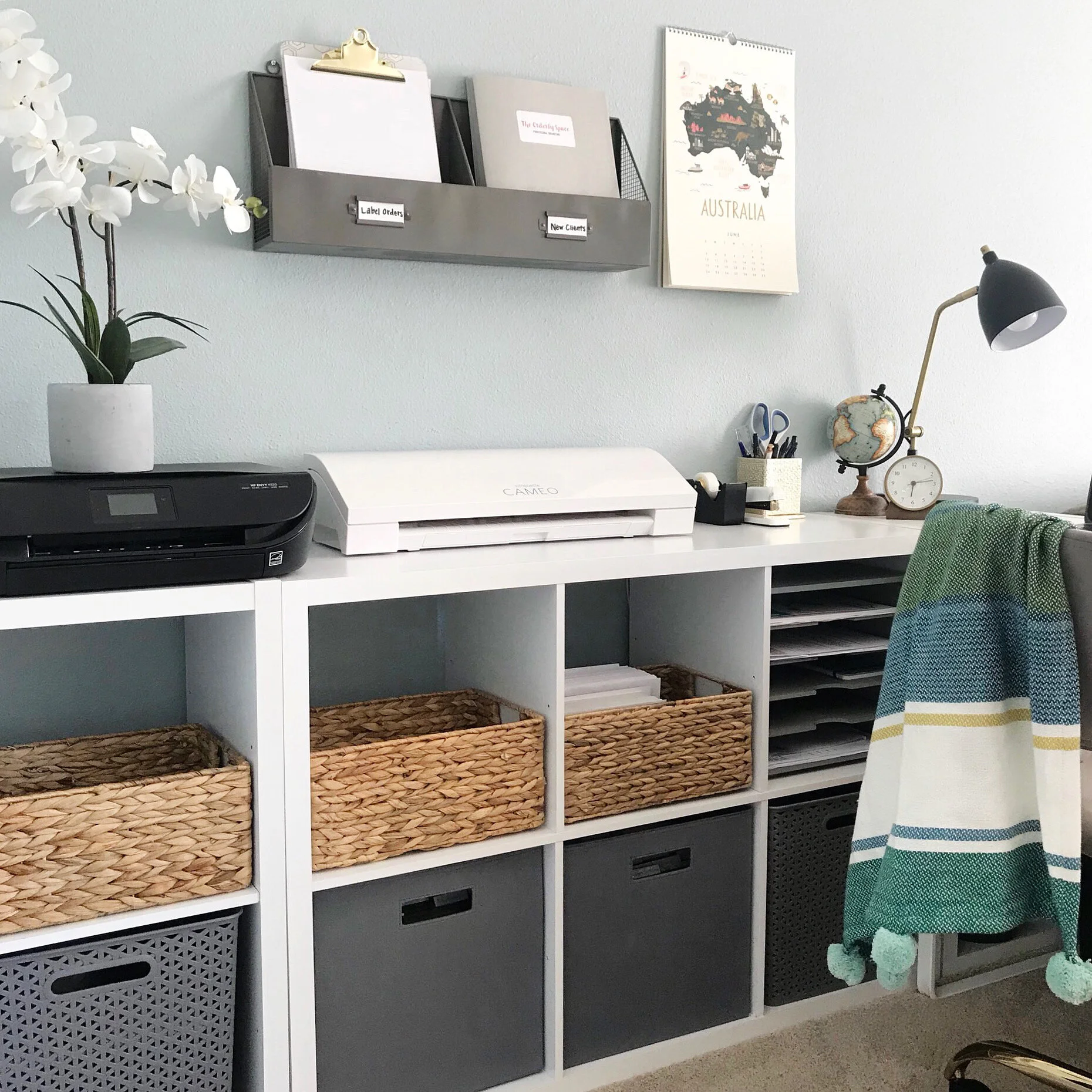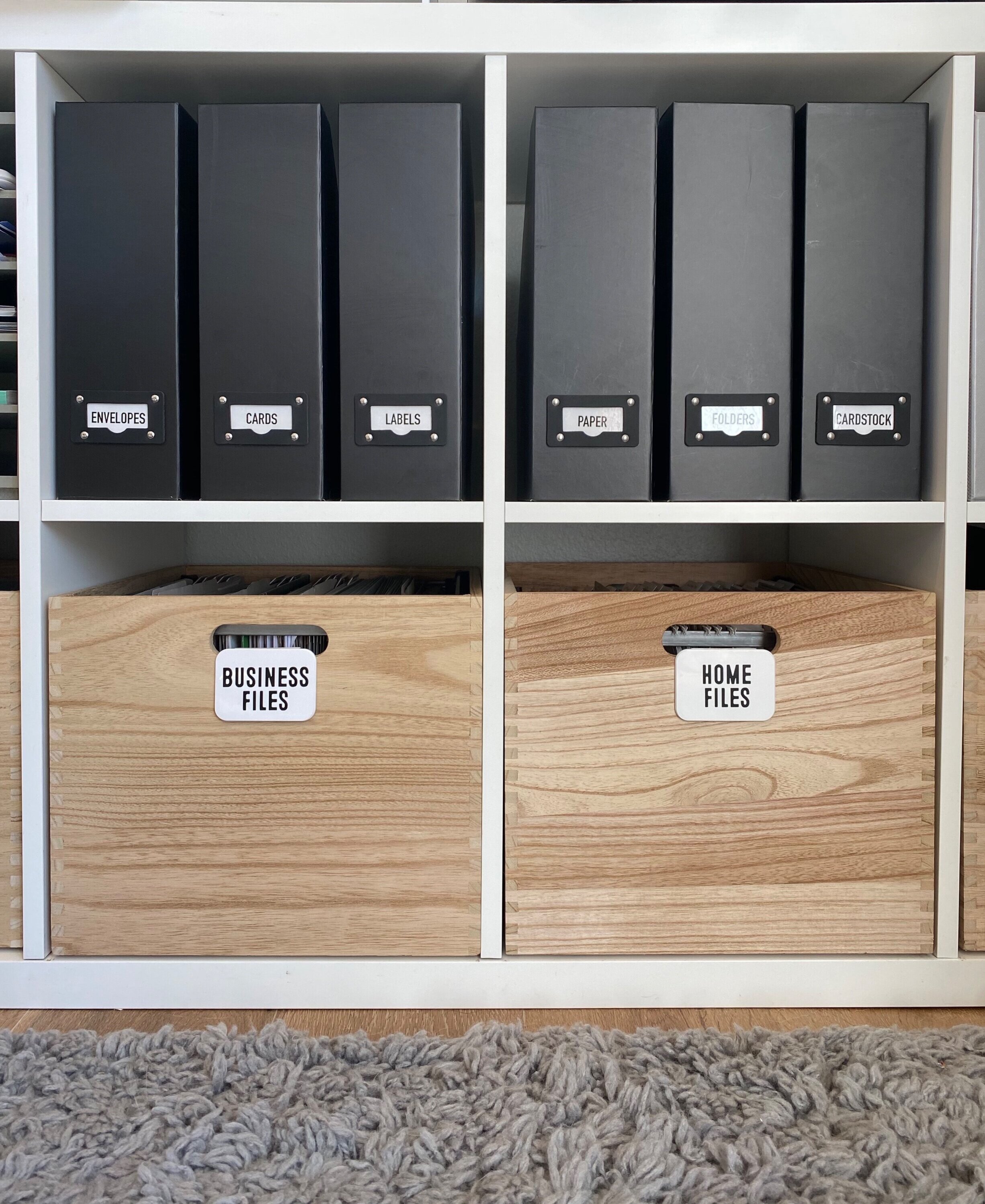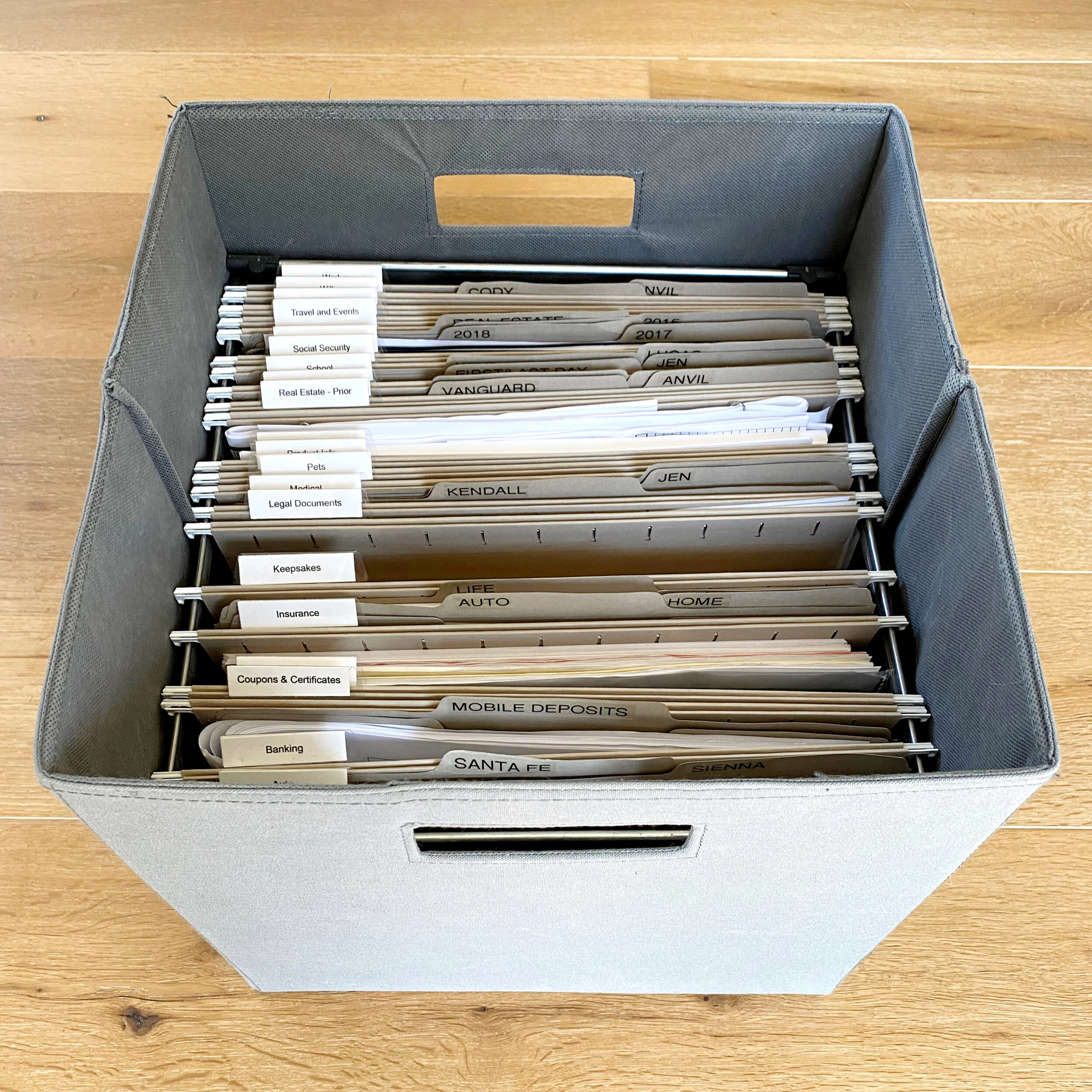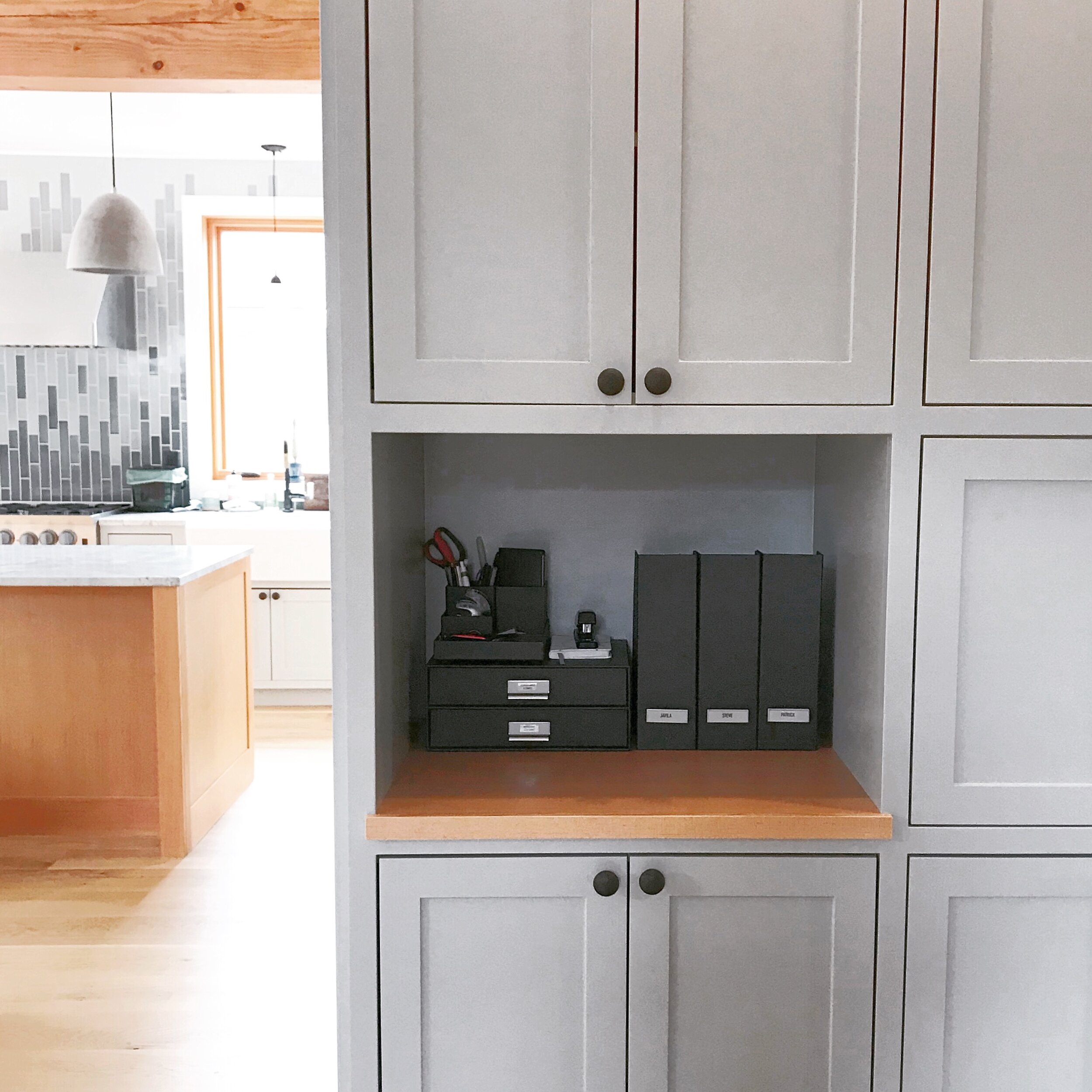Instant Office Organization
Ready or not, today we are going to tackle office organization! For me personally, an organized office leads to increased productivity and greater efficiency. Two things we could all benefit from! So I'm sharing all my secrets and tips to make your home or work office a more productive and efficient space. First, let's talk about papers!
Incoming Papers
To streamline the constant flow of papers, here at The Orderly Space we create a simple TWO file rule for all incoming mail, schoolwork, and paperwork. The only two categories you will need for this temporary holding spot are "To Do" and "To File". Every single paper that enters your home or office should fall into one of these two categories. If they don't - that probably means you can recycle or shred that item right away! Things that fall under the "To Do" category would be bills to pay, permission slips to sign, catalogs you plan to order from, party invitations, or correspondence to respond to. Things that fall under the "To File" category are bank statements, kids schoolwork, account statements, report cards, keepsake cards or photos, or any document that needs to eventually be filed into your long-term filing system. Now this system only works if you adhere to this next step. Set a reminder or calendar notification to deal with all these papers on a regular basis. This can be every evening, once a week, or every other day. Whatever works best for you! The goal is to tackle all these papers on a regular basis so that they don't accumulate over time. Everything in the "To Do" category should be dealt with and everything in the "To File' category can be filed in your long-term filing system.
Recycle and Shred
Wherever you designate your "To Do" and "To File" system also have a spot for recycle and shred. I keep my shredder and garbage can right next to this spot so that I can easily and efficiently get rid of the unnecessary the moment it comes through the door. My rule has always been - don't put off easy tasks that you can do now in less than one minute. There is nothing more counterproductive than an overflowing pile of items to shred!
File Storage
A traditional filing cabinet is great if you have the space. Or you can use an inexpensive filing box like this and store it in a closet if you are short on storage. I generally don't recommend the accordion style filing systems or the smaller latching file boxes with a handle as these don't seem to last as long or hold enough.
One file storage hack we use here a lot at The Orderly Space is to create a filing cabinet within a cube storage unit like this:
To do so you will need an adjustable hanging file folder frame that can adjust to 12" x 12" like this one from Amazon - you can ignore the bad reviews, we've used it countless times and it is great! This frame will fit into a standard 13" cube storage unit like this one from IKEA or this one from Target. We use these fabric bins from Target.
You can also use Multipurpose Bins from The Container Store within these same cubes to store extra computer paper, label sheets, card stock, or office supplies.
Filing System
A long-term filing system is going to be essential to maintaining your organized office space. I like to use hanging files for main categories and manila folders for sub categories. So for example - I would create a hanging file for "Insurance" with sub categories within for "Life, Home, Auto, etc." Here are the pretty standard main categories (and suggested sub categories) every home filing system should have:
Home File Categories:
Auto (sub file for each vehicle)
Banking (sub file for each account)
Coupons & Certificates
Home Repairs
Insurance (sub file for each category)
Keepsakes (sub file for each family member)
Legal Documents
Medical (sub file for each family member)
Pets (sub file for each pet)
Product Info
Real Estate - Current
Real Estate - Prior
Retirement (sub file for each account)
School
Social Security
Taxes (sub file for each year)
Travel & Events
Utilities (sub file for each account)
Will
Work (sub file for each job)
Business File Suggestion Categories:
Accounts
Banking
Certifications
Clients
Education
Employees (Sub file for each employee or contractor)
Expenses (sub file for each year)
Insurance
Inventory
Licensing
Networking
Orders (sub file for each year)
Website
What to Keep and What to Toss
Okay, this is where it might get a little harsh. You don't need as many papers as you think you do! We have organized enough houses to know that the years and years of paper hoarding will not serve you in the long run. With today's technology nearly every statement is available virtually so there is no need to save a paper copy. Same goes for product manuals. So here is what I recommend you keep:
1. Taxes: The IRS recommends that you “keep records for three years from the date you filed your original return or two years from the date you paid the tax, whichever is later.” If you file a claim for a loss from worthless securities or bad debt deduction, keep your tax records for seven years. Many people choose to save tax returns for seven years to be safe, but it is up to you!
2. Work: Keep pay stubs for the year until you receive your W-2 and file your taxes.
3. Receipts: The only receipts I save are the ones related to home improvements in case we need them to lower our taxable gain. Business related expense receipts are saved for three years in case of audit. Any other personal receipts (groceries, clothing, etc.) paid for with a debit or credit card I generally toss right away. If a return is necessary, stores can look up your purchase with the same card.
4. Statements: Keep only the annual summary report for bank accounts, investments, insurance policies, etc. Many investments and accounts send quarterly or monthly profit and loss statements (which if you can switch to digital statements - bonus!), once your annual statement is received you can toss the rest.
5. Checks: Keep check registers and check copies for one year.
Office Supplies
Just like any other storage space in your home, office supplies deserve the same organizational attention. We use these acrylic drawer dividers to keep desk drawers items neat and tidy. You will also want to create storage areas for overflow categories like paper, printer ink, labels, stamps, pens, etc. Our go to system for these would be Multipurpose Bins or stacking Sterilite containers.
Now that you have all the tools and tricks, it's time to tackle that office space!







